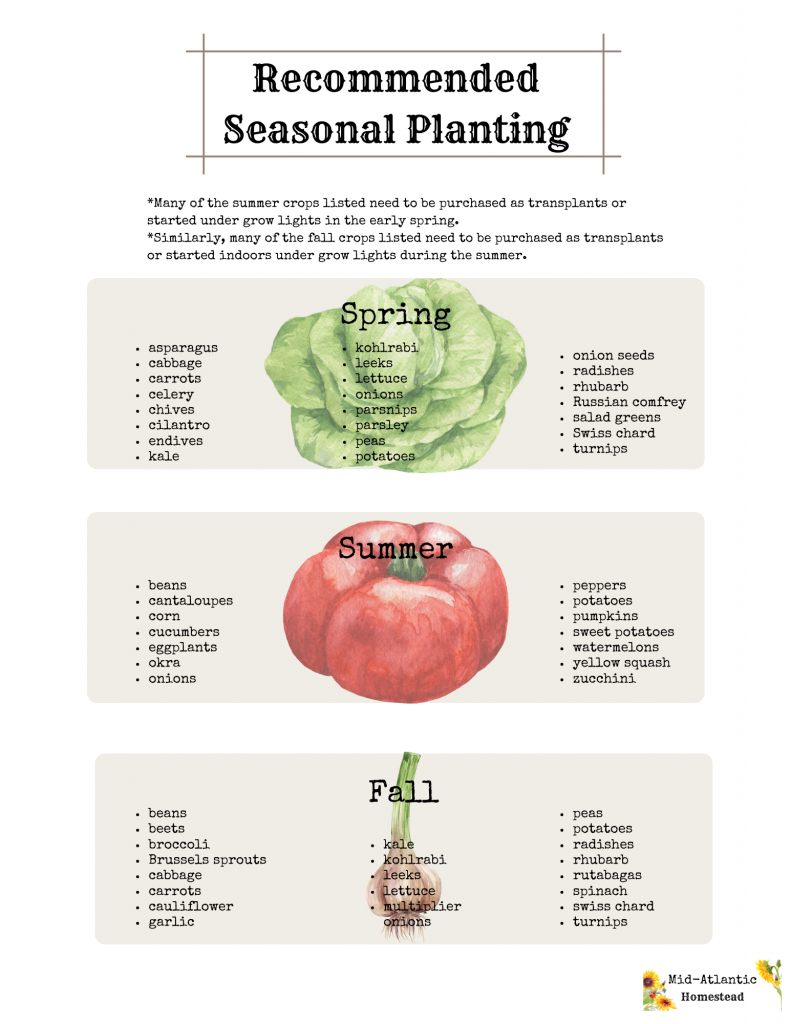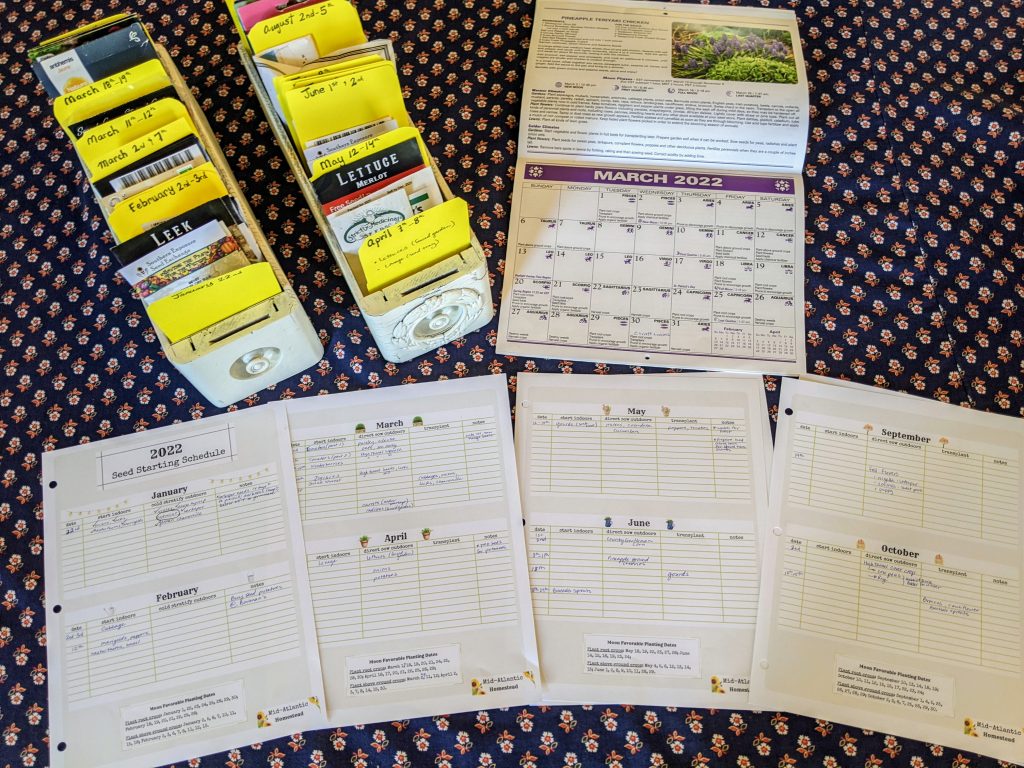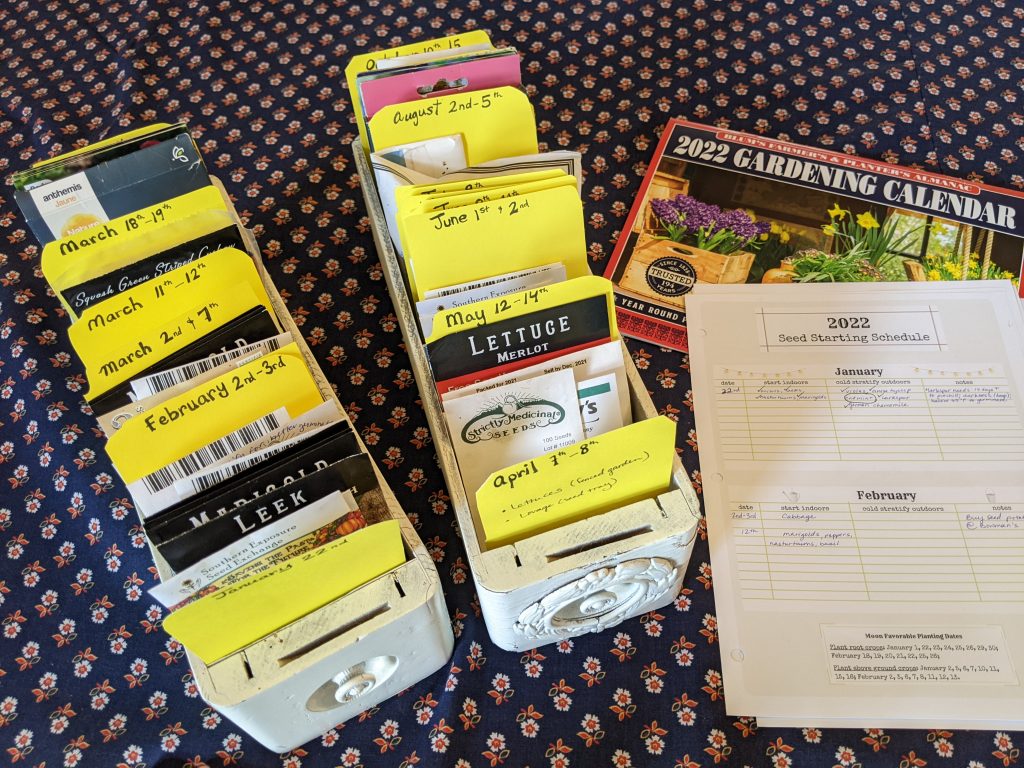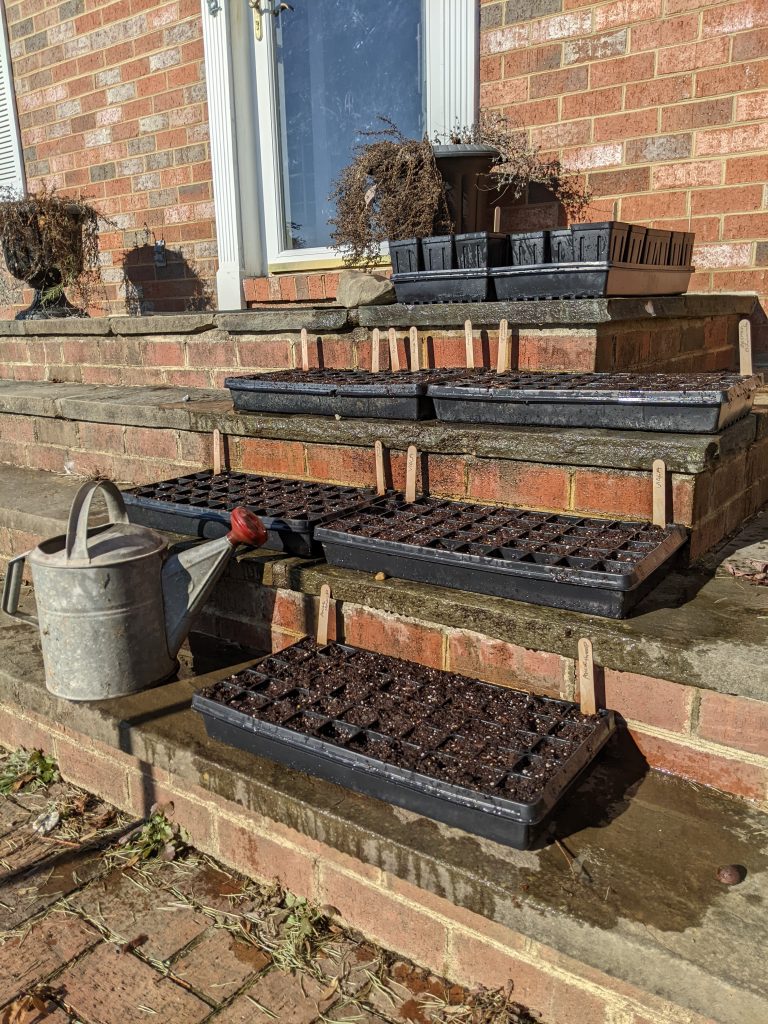
I never have enough garden space (or time!!) to plant ALL the things I would like to. Succession planting is wonderful. By succession planting, I mean starting early with cool spring crops and having a new summer or fall crop ready to go in the ground as the first crops peter out. However, succession planting takes a lot of forethought and planning if you want maximum yields.
The key to maximizing your harvest is quick and timely transitions from one seasonal planting to the next.
Here’s how to make this happen:
Step 1: Consider your overall garden layout
The first step is to plan a garden layout — I shared my 2021 and 2022 garden layouts in these posts. I also suggest looking through garden planning books from the library. These are three of my favorite books about planning a garden layout.

Step 2: Plan for seasonal crop rotation aka. succession planting
I usually make a basic layout plan, like the image above, and then decide on which crops I can squeeze in before or after my basic plantings are organized. From my experience growing a garden here in Maryland, and helpful charts like this one from our state Agricultural Extension Agency, I know that certain plants prefer cool spring and fall weather and others prefer to grow during long hot summer days. The “Recommended Seasonal Planting” chart below shows which veggies are recommended for planting in each season.
How succession planting works
If I want to grow peas, for example, I will plant them in March and know that they will be done producing when the summer heats up. That is a perfect time to pull out those pea plants and replace them with something heat loving, like beans. The beans will produce abundantly and then slow down as the days shorten into fall (or more realistically, as the bean beetle have their way with them, so sad!). That is a perfect time to pull out those bean plants and replace them with some sturdy broccoli starts (under mesh cover to prevent cabbage moths). My experience has been that that broccoli will produce heads well into December (here in the Mid-Atlantic, zone 7a).

Properly timed succession planting helps us grow a lot more food in less space
I visited a friend in Williamsburg, Virginia (zone 8a) a couple weeks back. She has just six 4 by 8 foot raised garden beds. But with her long growing season, we were able to create a plan for her to plant and harvest those beds after a full spring, summer, and fall crop — THREE harvests from each bed! That means that with proper planning we were able to essentially TRIPLE her growing area.
Step 3: Plan your seed starting schedule
I have a lot more area to work with here on our homestead than my friend’s six garden beds, but I still want to maximize my harvest from the garden area that I am using.
The key to maximizing your harvest is quick and timely transitions from one seasonal planting to the next.
I have learned this lesson the hard way again and AGAIN. It’s so important to go into the gardening season with a clear plan. I admit, I’m still working on improving my garden planning skills. It’s so hard to keep on top of everything when the garden is in full swing. I feel like my brain goes into stress mode and it’s hard to consider the big picture. The more organized I am before I hit that mid-season stressed out mode the better.
My Seed Starting Planner
My seed starting planner is a pretty printable tool to help us time our succession plantings properly. It includes a little chart for each month showing which seeds need to be sown indoors, direct seeded outside, or transplanted that month and which date it should happen.
Love this? Check out my Homestead Garden Journal and Planner for 2023.
Moon Favorable Planting Dates
It also includes the “Moon Favorable” dates for planting above and below ground crops. I’m not a die hard follower of the Farmers Almanac’s recommended planting dates, but I tried it last year and it did seem to work well. Blum’s Gardening Calendar is the best — all the information on moon planting is laid out clearly on each day. It’s easy to follow.
Looking at my basic garden layouts and plans for 2022, I created a schedule for starting all the seeds that I will need for each planting. Many of my plantings are perennials already in place, and will not allow for succession planting. I will however be succession planting all my annuals. For example, after my winter and summer squash harvests are done in the high tunnel, they will be followed with cauliflower and a cover crop.

After I finished creating my seed starting schedule, I organized my seeds with dated file sorting cards, according to planting dates. I usually just bundle them together with scraps of paper and rubber bands by planting dates. But since I started trying to plant on moon favorable dates, it makes sense to organize my seeds greater detail.

I’ve started implementing my plan already. The January 22nd seeds are either warm under my grow lights or cold stratifying on my front steps (according to the seeds’ preferences :)





After letting my tomato bed rest last year and receiving an 8×3 greenhouse; I plan to start growing early and extend the growing season. I have been told to grow Marigolds around my garden for the past 3 years or more. I believe I will finally do that. Squash bugs devoured my plants last year, so the Squash will be in the ground instead of the raised bed. As well, peas and beans will be included in the plants planned this year.
I don’t know the zone of Central Virginia, but I believe the last frost is supposed to be April 15th.
That sounds great! I usually plant tomatoes in late March in our greenhouse. And yes, I agree you should always plant marigolds with tomatoes. They still suffer from hornworms, but it is possible to pick them off and keep on top of them. My best solution for squash bugs is to plant resistant varieties or trap crops. Anything mixed with a cushaw variety seems to be fairly resistant to pest problems. I don’t pick off the squash bugs anymore. I just keep saving and replanting seeds from the plants that did well despite the bugs.